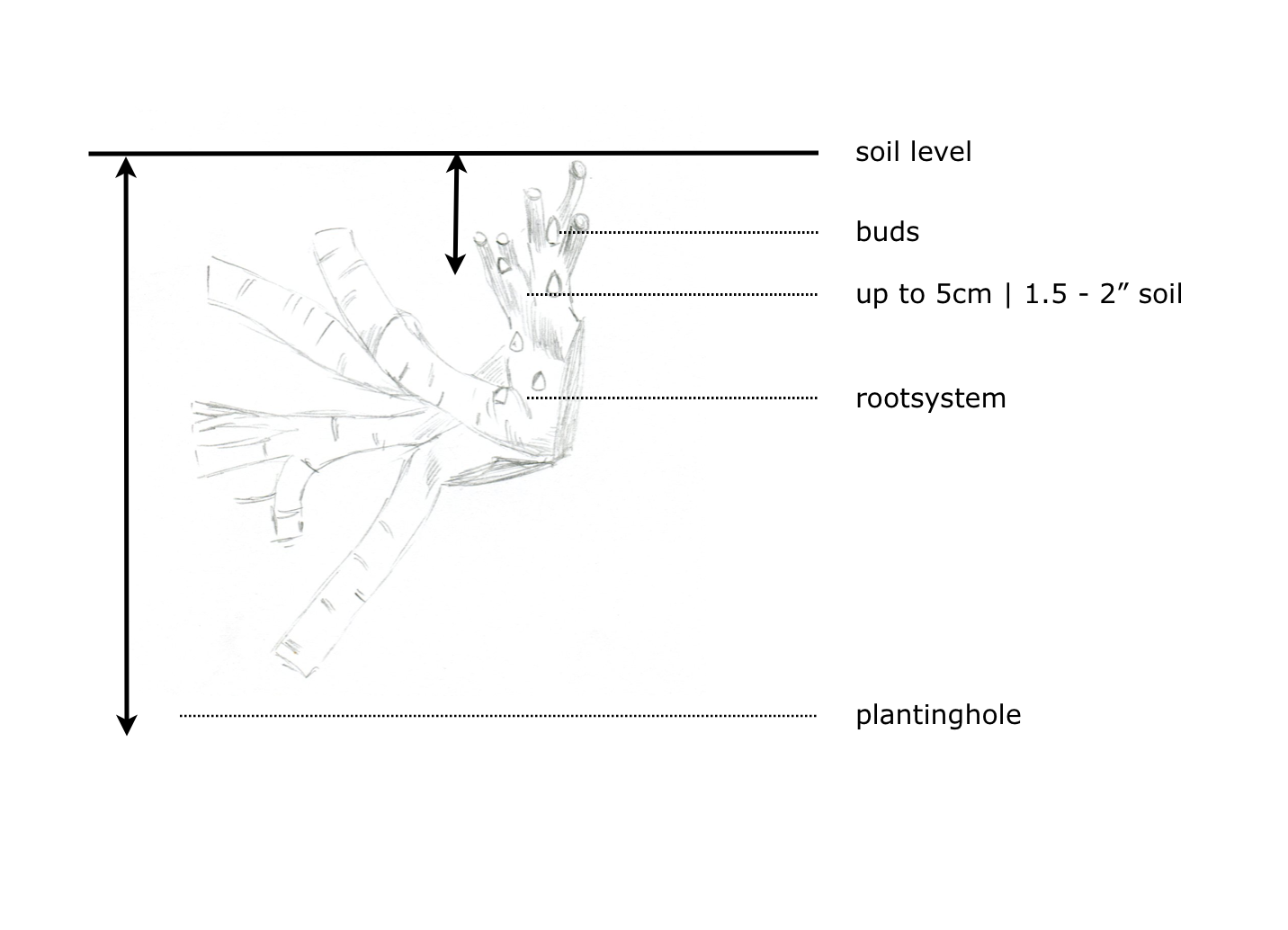
An Itoh or intersectional hybrid peony is a hand-made cross between a herbaceous and a tree peony. Its foliage and flowers reveal its tree peony ancestry. However, its growth pattern is similar to that of the herbaceous peony. The foliage remains healthy until the first frost.
They are hardy in temperate climates and require a period of frost to induce flowering the following spring. They are easy plants and real survivors. We hope that the hints and tips given here will help you to grow healthier and stronger peonies next season.
Soil
Peonies prefer neutral soil pH. Their roots are similar to those of tree peonies and they will not thrive in waterlogged soil. Peonies will grow in most types of soil. Adding garden compost to sandy and heavy clay soils will improve the structure and provide a better water and nutrient base.
Location
A peony can live to a very old age, 50 years is no exception. It is therefore important to choose the right location from the start. Always give them plenty of space, 80cm to 100cm or more for larger varieties. Peonies should not be planted under trees or shrubs. Competing with established trees and shrubs for light, air, moisture and nutrients is a strenuous business. Provide plenty of sunlight and, just as importantly, airflow. To grow into a strong and healthy plant, it needs about 6 hours of sun, although full sun is preferred.
PlantingPlant in sufficiently deep loosened soil, you will need to get out the spade. Mix additional horn shavings, bone meal and/or other SLOW release fertiliser into the planting hole. Light soils will benefit from the addition of potash or potassium fertiliser. Don't let the roots touch the fertiliser. When planting, place the root on its longest side in the planting hole and plant the eyes no deeper than 4-5 cm below the surface of the soil. In warmer areas it should be no less than 2-3cm below the surface of the soil.To give a bare-root peony a head start, it is best to plant it in the autumn to give it time to settle and develop new roots. Container peonies can be planted all year round. In extreme weather conditions it is best to postpone planting. |
 Aftercare
Aftercare
SPRING: Remove spent flowers.
SUMMER: If you planted in spring, check regularly, especially in the first year, that the plant has enough water during hot summer days. Water generously once or twice a week rather than small amounts every day.
If you plant in autumn, the peony will produce its hair roots in situ, which are its guarantee for the future. The new roots will anchor the young plant and provide moisture in the event of drought next spring. When mature, the roots reach a depth of 50 cm. A peony root planted in the autumn in a well-prepared spot is self-sufficient. Peonies in our fields are not watered.
LATE AUTUMN: Before winter, cut back the top growth to 10cm and remove it from the garden. It is possible that some buds may have formed on the stems in the autumn, but to get a nice, firm, dome-shaped bush it is better to cut the stems back to 10cm above the ground. The plant will re-sprout from the ground in the spring.
Give your peony a regular dose of slow-release fertiliser once a year.
They need frost to flower the following year. Do not mulch unless you live in a harsh (polar) climate, and even then it is questionable whether you should cover your peony all year round.
Staking
Because of their tree peony ancestry, the stems of Itoh peonies are more lignified than those of their herbaceous cousins, so Itoh peonies do not need to be staked.
Diseases
Itoh peonies are robust hybrids and are also less likely to be affected by fungal diseases. The most common fungal disease is Botrytis. If your peony shows signs of fungal disease on leaves, shoots or flowers, cut out the affected parts and remove them from the garden. Clean your pruning tools with 70% alcohol. Pick up and remove any fallen leaves. If you wish to use a fungicide, there are several available in garden centres, always use as directed. However, your first concern should be to get to the root of the problem. Stuffy conditions and poor water management are obvious areas to tackle first.Pests
Itoh peonies do not secrete the sticky substance that herbaceous peonies produce around their flower buds, so ants are not attracted to them. Although ants are not pests.
More
In our Facebook and Instagram page we try to address different peony-related issues. In doubt, please feel free to use the contact form to pop your question.
Happy planting,
Graefswinning
